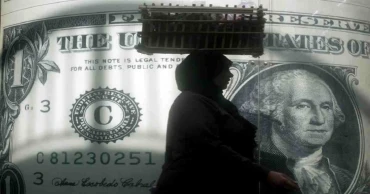FY22
Reported suspicious financial transactions up by 62.32% in FY22: BFIU
Generally, a suspicious transaction report (STR) means a formatted report of suspicious transactions or activities where there are reasonable grounds to believe that funds are the proceeds of predicate offense or may be linked to terrorist activity or the transactions do not seem to be in the usual manner.
Despite strengthening monitoring to stop money laundering, STR has increased in Bangladesh by 62.32 percent in the fiscal year 2021-22.
Despite strengthening monitoring to stop money laundering, suspicious transaction report (STR) has increased by 62.32 percent in the fiscal year 2021-22.
Read: BFIU gets 3 months to sign legal pacts with 10 countries to bring back black money
According to a report of Bangladesh Financial Intelligent Unit (BFIU), a concern of Bangladesh bank, 8571 STR occurred in FY22; it was 5280 in FY21. In a fiscal year, STR has increased by 3291 or 62.32 percent.
Earlier in FY20, there were 3675 suspicious transaction reports while in FY19 such transactions were 3573, BFIU’s latest annual report said.
BFIU presented the details of the report during a press conference at Bangladesh Bank on Monday. The central bank’s Executive Director and BFIU head Masud Biswas shared the information with media.
Read: BFIU summons WASA chief Taqsem’s bank account details
He said not all suspicious transaction reports are crimes. “If there is evidence of any crime, we take action,” he said.
So far, action has been taken against clients and related parties of many banks and financial institutions, he said.
According to the BFIU report, banks have submitted a maximum of 7999 suspicious transaction reports in Bangladesh in the entire financial year. In the previous financial year, the banks submitted 4495 reports. Financial institutions submitted 106 reports. Exchange houses have submitted 457 reports.
Read More: Banks instructed to campaign for bringing back laundered money
Central Bank Executive Director and Spokesperson GM Abul Kalam Azad, BFIU Director Rafiqul Islam, and Additional Director Kamal Hossain among others were present at the press conference.
3 years ago
Bangladesh received over $1 billion remittance in Sep 1-15
Bangladesh received inward remittances worth over USD $1008.67 million (1,000 million = 1 billion) in the first 15 days of September, amid the forex crisis in the country.
Bankers said remittance inflow shows an upward trend as the remitters are encouraged by the depreciation of taka and they get more than Tk 108 per dollar.
The remittance inflow is expected to cross $2 billion in September.
Read: Uniform rate: Tk 108/dollar max for remittance, Tk 99/dollar for export income from tomorrow
Bangladesh received remittances of $2.09 billion in July and $2.03 billion in August, which became a blessing amidst forex crisis.
Md Serajul Islam, executive director and spokesperson of Bangladesh Bank told UNB that the central bank has simplified various processes to attract more remittance through banking channels.
The government is also extending remittance incentives as well as providing policy support. Now the dollar rate is getting higher, he said.
Read: Hope amidst forex crisis: Bangladesh received $2.03bn remittance in Aug
The sector insiders said that Bangladesh’s inward remittance flow will grow more as manpower export hit a new high in the past fiscal on a post-pandemic rebound of the overseas job market.
The data of the Bureau of Manpower Employment and Training (BMET) showed over 9.88 lakh workers had gone abroad in the fiscal year FY22 while this figure was 2.71 lakh in FY 21.
This happens to be the highest number of annual overseas jobs in the last seven years.
Read How to safely send remittance to Bangladesh?
It is also contributing to growing up the inward remittance flow in Bangladesh.
3 years ago
Inward remittance fell by 21% in 5 months of FY22
Bangladesh received (USD) $1553.70 million inward remittance in November, which is considered lowest in 18 months.
Bangladesh Bank (BB) data shows that the expatriates sent $1553.70 million remittance in November 2021 compared to $2078.74 million in November 2020 amid the Covid-induced lockdown in almost all their host countries.
Read: Bangladesh’s forex reserve expected to thrive on increased remittance inflow
According to the BB, in the first five months (July-November) of the fiscal year (FY) 2021-22, Bangladesh received remittance of $8.61 billion down from $10.89 billion in the FY 2020-21. It means the expatriates’ income has decreased by 21 per cent to $2.28 billion in five month in the current fiscal year.
The expatriate income shows fall for last five months in the current fiscal year despite renewed economic activities in the Middle Eastern and European countries and the USA.
The sector insiders say money transactions on illegal channels (hundi) have increased since the pandemic related restrictions were lifted.
Besides, the rate of new employment has been lower than the job loss.
Read: Bangladesh Bank allows receiving remittances through OPGSPs
The inward remittance inflow of last five months of FY22 saw decreasing trend compared with the same period in the FY21.
Arrival of remittance was $1.87 million in July, $1810.10 million in August, $1726.71 million in September, $1646.87 million in October and $1553.70 million in November of FY22.
In the F21 inward remittance was received $2598.21 million in July, $1963.94 million in August, $2151.05 million in September, $1646.87 million in October and $2078.74 million in November.
4 years ago
UBS revises India GDP forecast to 9.5% from 8.9% for FY22
Citing faster-than-expected recovery, rising consumer confidence and the resultant spending spike, Swiss brokerage UBS Securities has revised upwards its growth forecast for the current fiscal to 9.5 per cent from 8.9 per cent in September, reported the Economic Times.
The brokerage also sees the economy clipping at 7.7 per cent in FY23 but moderating to 6 per cent in FY24, as it expects the benefit of the low-interest rate regime to end by the end of FY23, and it sees the central bank hiking policy rates by 50 bps in the second half of the next fiscal.
The Reserve Bank also forecasts 9.5 per cent GDP growth this fiscal while the average projection ranges from 8.5 to 10 per cent. The government projection is around 10 per cent.
The GDP grew 20.1 per cent in the June quarter of FY22.
In its September review, UBS said on a seasonally adjusted sequential basis, the real GDP declined by 12.4 per cent in the June quarter against the -26 per cent in the same period last year.
Therefore, we maintain the base case estimate of GDP growth at 8.9 per cent in FY22 compared to the consensus of 9.2 per cent against the deeper 7.3 per cent contraction in FY21, UBS Securities said.
The economy is bouncing back on progressive reopening, and the recovery from the second wave has been more pronounced than what we anticipated, Tanvee Gupta Jain, the chief economist at UBS Securities India said on Wednesday. Therefore pencilled in a higher-than-expected GDP run this fiscal.
Without giving an exact number, she said the economy will grow by 9-10 per cent in Q3 and 6-6.5 per cent in Q4 this fiscal, leading to higher overall full-year growth.
Gupta-Jain told reporters in a concall that she sees real GDP clipping at 9.5 per cent this fiscal, up from 8.9 per cent forecast earlier, 7.7 per cent in FY23 -- which is more optimistic than the consensus 7.4 per cent for the year, but the growth momentum will moderate to 6 per cent in FY24 as the output gap will remain negative amidst the global growth engine slowing down.
Their optimism comes from their internal UBS India Activity Indicator data, which suggest economic activity has improved sequentially by an average of 16.8 per cent in the September quarter after contracting 11 per cent in the June quarter. Even for October, the indicator was up 3.1 per cent month-on-month on the festive demand bounce.
The brokerage bases the more-than-consensus growth optimism on the following: though consumption growth may moderate measures to boost public Capex and early signs of a recovery in the residential real estate sector may offset some of the adverse impacts.
Similarly, exports could also moderate next year from the very high rates this year due to a shift from goods to service consumption at the global level as the pandemic recedes.
They also see a potential credit accelerator effect in the country aiding the recovery. The baseline assumption is that activity continues to normalise, and remaining mobility restrictions are gradually removed.
Downside risks to the outlook include the following: a mutant virus that is resistant to vaccines is the biggest downside risk, as it may leave the government no choice but to begin new mobility restrictions, another could be a more than the expected spike in inflation and the resultant hike in repo rates to the tune of 75 bps next fiscal. If both materialise, then FY23 growth will be much lower at 5 per cent, she said.
And the upsides would be a successful and timely implementation of the recently announced structural reforms boosting growth beyond our baseline forecast, which will also lead to the economy closing the output gap faster.
According to the brokerage, potential growth has slowed to 5.75-6.25 per cent currently compared to over 7 per cent in 2017, due to longer-than-expected disruption caused by the pandemic and balance sheet concerns faced by economic agents.
Beyond FY22, Gupta-Jain believes Capex, especially infrastructure spending, manufacturing and exports will be the next key growth drivers.
On inflation, she expects CPI to decelerate to 4.8 per cent in FY23 from 5.4 per cent in FY22, assuming the RBI gradually starts unwinding its ultra-easy policy as the economic recovery gains momentum. In a base case scenario, she expects a policy rate hike of 50 bps in H2 FY23.
On the fiscal front, she expects the government to remain committed to fiscal consolidation and narrow the deficit to 8.8 per cent in FY23 from 10.1 per cent in FY22.
4 years ago



.jpg)


